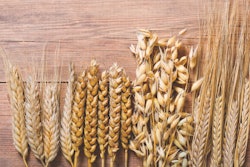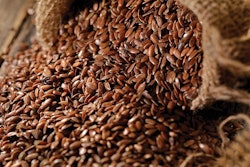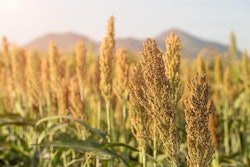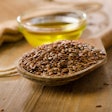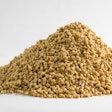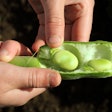
Protein alternatives are being sought out as soybean meal price and availability fluctuate
After my first blog for 2022, regarding problems and solutions for alternative cereals, I considered it imperative to continue with a similar report on alternative proteins, again focusing on broilers.
Although soybean meal price and availability are forecasted favorably for animal feed producers, the current situation worldwide remains baffling (logistics, COVID, speculation, forecasts, etc). Thus, soybean meal price and availability are on the daily discussion top list and protein alternatives are eagerly being sought by feed professionals.
I have prepared a list of six most common protein alternatives used in broiler feeds, along with their main issue and potential fix.
- DDGS. Overall, DDGS are corn times three minus the starch. So, it contains three times the protein, fat, and fiber, and a fraction of the starch that was converted into ethanol. Any problem we face with corn, we also face it also with DDGS. In my opinion, quality and batch characterization remains the main issue with DDGS. A thorough analysis of major nutrient and potential hazards (e.g., mycotoxins) can safeguard against major surprises. Otherwise, it requires careful rebalancing of all nutrients, something done by an experienced nutritionist. A closing remark should be made on the enhanced carotenoid content that can impart a yellowish color to broiler skin.
- Sunflower meal. This is the ingredient of choice for most of eastern Europe where sunflower is used for oil extraction. If the resulting meal contains little of the husks (fiber), then it can be used relatively freely in broiler feeds. Otherwise, the fiber content (highly lignified) will limit its inclusion rate.
- Peas. Raw pea seeds contain about the same amount of energy as barley (2,900 kcal AMEn) and vary considerably in crude protein (20% to 26%). Pea seeds are limiting in methionine. Pea seeds contain a significant amount of non-protein nitrogen that is usually not considered during formulation. Protein digestibility and fiber levels vary considerably depending on variety. Pea seeds contain the same type of anti-nutritional factors as soybeans, but at a reduced concentration. Winter varieties and those of more color (in flower and seed) appear to contain more anti-nutritional factors. Pea seeds from modern improved varieties can be fed with greater liberty.
- Canola meal. This is rapeseed with virtually insignificant levels of anti-nutritional factors. In such cases, canola meal can replace most of the soybean meal, but if it is normal rapeseed meal, such as that produced in the EU, extra care should be taken to properly quantify the level of anti-nutritional factors. Inclusion levels should then be adjusted accordingly. Rapeseed’s major anti-nutritional factors are erucic acid and glucosinolates. Varieties with significantly reduced levels of these two compounds are designated as zero-zero.
- Animal byproducts. These include poultry meal, meat meal, feather meal, hatchery meal, and fish byproduct meal. Oxidation in high-fat products is the main issue and this can be avoided by a vigorous quality control program. Otherwise, nutrient levels such as sodium (in fish products), calcium (where bones are included), and protein should be carefully monitored, and correct values be used during formulation. Digestibility might be an issue if products are overcooked during the drying process. Buying from a high-quality supplier is essential, especially when such products are used in feeds for young broilers.
- Microbial protein. This is a major byproduct of many industries, and there is a clear trend to start producing it specifically for animal feeds. Prices are always an issue as each product is distinctively different. Some products offer exceptional performance responses, whereas others are disappointing. Microbial protein is a wide term that includes a vast variety of microorganisms. It is best to use products with a proven record in improving broiler performance under commercial conditions.
Again, as in the case of cereal alternatives, there are more issues than solutions with every new or old protein alternative. Thus, a nutritionist with experience in dealing with alternative ingredients over a wide range of conditions should be consulted to safeguard against surprises.

